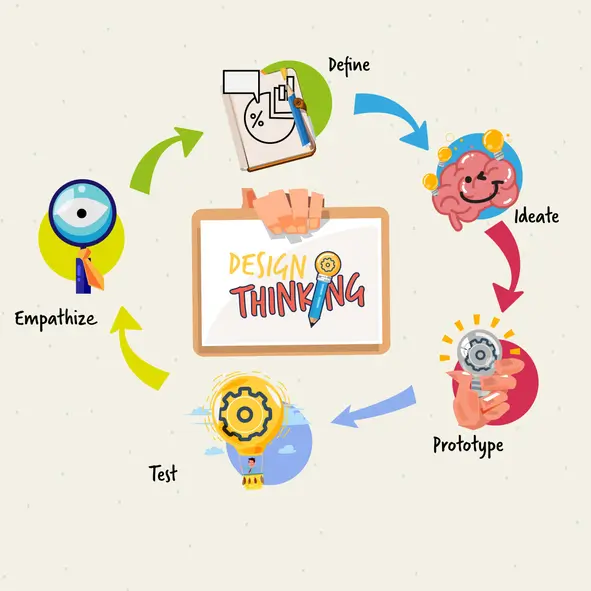
Learn how to evaluate UX agencies with confidence
When you’re leading a product team in SaaS or health tech, knowing how to evaluate UX agencies can feel like a leap of faithYou’ve got business goals to hit, internal stakeholders to align, and users whose needs are constantly evolving. Bringing in the right design partner can move your product forward. Bringing in the wrong one can slow you down.
So how do you know if a UX agency is legit?
Some companies try to test the waters by asking for speculative work — design contests, free mockups, or small test projects — before a contract is signed. On the surface, it sounds reasonable: “We want to see what you can do before we commit.”
But while spec work might feel like a safety net, it’s actually a red flag.
At Standard Beagle, we’ve encountered this request more times than we can count — and we always say no. Not because we don’t want the work, but because speculative work compromises the very thing you’re hiring us to do: solve real problems with thoughtful, strategic design.
Here’s why product leaders should avoid spec work — and what to look for instead when evaluating a UX agency.
What spec work reveals when you’re learning how to evaluate UX agencies
Speculative work — or spec work — is when a designer or agency completes work for a prospective client before being paid or formally engaged. It might be part of a contest, an RFP, or just a one-off “test” to see if the agency is a good fit.
Some people confuse this with a portfolio. But there’s a big difference: a portfolio shows work done for past clients, while spec work asks the designer to create something brand-new just for you — without collaboration or compensation.
And it’s surprisingly common.
Here’s an example of an email we once received:
Hi Cindy – I came across your portfolio on Behance and thought you may be interested in a design competition we launched this morning.
We are developing an app that connects to the grocery stores you shop at and shows you recipes you can cook with the groceries you purchased.
Over the last 9 months we built out the backend and now we’re looking for a designer to build the iOS and Android apps. I’d love to see what ideas you have for the design and UX.
The design competition is just for 4 screens to get a sense of your style and creativity. Here’s the link with details (website hidden).
Let me know if you have any questions or thoughts about the competition.
They followed up twice to try and get us to participate. We declined — and here’s why.
3 reasons product leaders should avoid spec work
1. It bypasses the UX process
Great UX doesn’t happen in a vacuum. It’s not a guessing game or a design exercise done in isolation. It’s a process — one that involves collaboration, research, iteration, and alignment with your goals and user needs.
When you ask for speculative work, you skip all of that. You’re asking for a product without the strategy. And that’s not how successful SaaS products are built.
Here’s a real example: a potential client once asked me to submit a homepage design before she’d even pay a deposit. She’d already praised our website and our portfolio. I explained our UX process, showed her case studies, and even offered references. But she insisted on seeing a custom design “vision” before committing.
We passed. Not because we couldn’t do the work — but because designing without discovery is just guessing. And that doesn’t serve the client.
2. It signals misaligned priorities
Spec work is often a sign that a prospective client is looking for free ideas, not a strategic partnership. That’s a red flag.
We’ve seen companies run design contests to gather ideas from dozens of designers, only to cobble together a Frankenstein version internally. Or worse — they pick a “winner” based on aesthetics alone, with no consideration for usability, accessibility, or long-term scalability.
That’s not how you build a strong product. And it’s not how we work.
As a product leader, your goal is to find a UX partner who understands your users, your business, and your long-term vision — not just someone who can make something look pretty in a vacuum.
3. It undermines the value of design
Design is a craft — one developed over years of experience, learning, and problem-solving. When you ask for free work, you’re saying that time and expertise has no value unless it wins you over on the first try.
And that’s just not how great design works.
You wouldn’t ask a doctor to diagnose you before the appointment. You wouldn’t ask a lawyer to draft a contract before being retained. You wouldn’t ask a coffee shop to let you sip your latte before you decide whether to pay.
Design should be no different.
The American Institute of Graphic Arts (AIGA) puts it this way:
“AIGA believes that professional designers should be compensated fairly for their work and should negotiate the ownership or use rights of their intellectual and creative property through an engagement with clients.”
What to do instead: How to evaluate UX agencies the right way
So if you’re wondering how to evaluate UX agencies, here’s what we recommend. Here’s what we recommend:
Review real case studies
Look beyond the visuals. Ask how success was defined, what metrics were tracked, and what process was used to get there.
Understand their UX process
One of the most overlooked steps in how to evaluate UX agencies is understanding how they approach research, discovery, and iteration. A good agency should walk you through how they approach discovery, user research, stakeholder alignment, and iteration. If they jump straight to deliverables, that’s a red flag.
Ask about collaborative fit
Can they work with your devolpment team? Do they tailor their process for SaaS vs health tech? Do they understand your roadmap?
Consider a small paid pilot
Some agencies offer a focused discovery sprint or a UX audit before a full engagement. It’s a low-risk way to test the partnership — without asking for free work.
Why we stand firm
At Standard Beagle, we design thoughtful digital products through a repeatable, collaborative process. We work with product teams across SaaS and health tech to solve real user problems — not to guess our way into a contract.
We don’t do speculative work because we believe in building trust, not throwing ideas over the fence. If you’re looking for a UX partner who will dig in, ask questions, and help you reach your goals — we’re all in. But only after we’re properly engaged.
Ready to find the right UX partner?
If you’re figuring out how to evaluate UX agencies and want to know what working with us is really like — let’s talk. See how we work or schedule a free consult.











